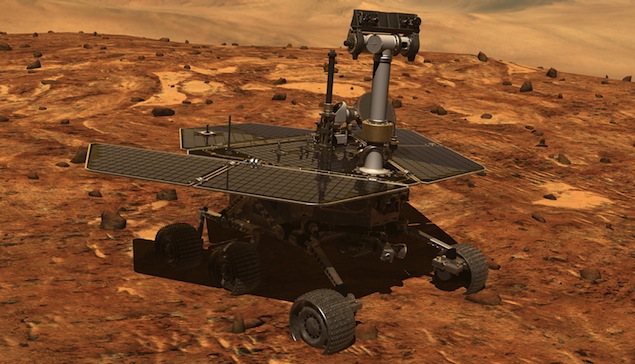- Home
- Science
- Science News
- Nasa's Curiosity Rover Set to Drill Into Crystal Rich Rock on Mars
Nasa's Curiosity Rover Set to Drill Into Crystal-Rich Rock on Mars

The rock target called "Mojave" at Gale Crater displays copious slender features - slightly smaller than grains of rice - that appear to be mineral crystals.
"The crystal shapes are apparent in the earlier images of Mojave but we do not know what they represent," said Curiosity project scientist Ashwin Vasavada at Nasa's Jet Propulsion Laboratory, Pasadena, California.
"We are hoping that mineral identifications we get from the rover's laboratory will shed more light than we got from just the images and bulk chemistry," he added.
To begin with, Curiosity is beginning a "mini-drill" test to assess the rock's suitability for deeper drilling which collects a sample for on board laboratory analysis.
This is the fourth new version of the on board software since the rover's August 2012 landing.
The "Mojave" drilling begins Curiosity's third round of investigating the basal layer of Mount Sharp exposed at an area called "Pahrump Hills".
Curiosity's Chemistry and Mineralogy instrument (CheMin) can identify specific minerals in rock powder from a drilled sample.
Analysis of the drill hole and drill tailings may also reveal whether the crystals are only at the surface, like a salty crust, or are also deeper in the rock.
There could be a fairly involved story here.
"Are the salt crystals left from a drying lake? Or are they more pervasive through the rock, formed by fluids moving through the rock? In either case, a later fluid may have removed or replaced the original minerals with something else," Vasavada asked.
Catch the latest from the Consumer Electronics Show on Gadgets 360, at our CES 2026 hub.
Related Stories
- Samsung Galaxy Unpacked 2025
- ChatGPT
- Redmi Note 14 Pro+
- iPhone 16
- Apple Vision Pro
- Oneplus 12
- OnePlus Nord CE 3 Lite 5G
- iPhone 13
- Xiaomi 14 Pro
- Oppo Find N3
- Tecno Spark Go (2023)
- Realme V30
- Best Phones Under 25000
- Samsung Galaxy S24 Series
- Cryptocurrency
- iQoo 12
- Samsung Galaxy S24 Ultra
- Giottus
- Samsung Galaxy Z Flip 5
- Apple 'Scary Fast'
- Housefull 5
- GoPro Hero 12 Black Review
- Invincible Season 2
- JioGlass
- HD Ready TV
- Laptop Under 50000
- Smartwatch Under 10000
- Latest Mobile Phones
- Compare Phones
- Honor Win RT
- Honor Win
- Xiaomi 17 Ultra Leica Edition
- Xiaomi 17 Ultra
- Huawei Nova 15
- Huawei Nova 15 Pro
- Huawei Nova 15 Ultra
- OnePlus 15R
- Asus ProArt P16
- MacBook Pro 14-inch (M5, 2025)
- OPPO Pad Air 5
- Huawei MatePad 11.5 (2026)
- Xiaomi Watch 5
- Huawei Watch 10th Anniversary Edition
- Acerpure Nitro Z Series 100-inch QLED TV
- Samsung 43 Inch LED Ultra HD (4K) Smart TV (UA43UE81AFULXL)
- Asus ROG Ally
- Nintendo Switch Lite
- Haier 1.6 Ton 5 Star Inverter Split AC (HSU19G-MZAID5BN-INV)
- Haier 1.6 Ton 5 Star Inverter Split AC (HSU19G-MZAIM5BN-INV)

















